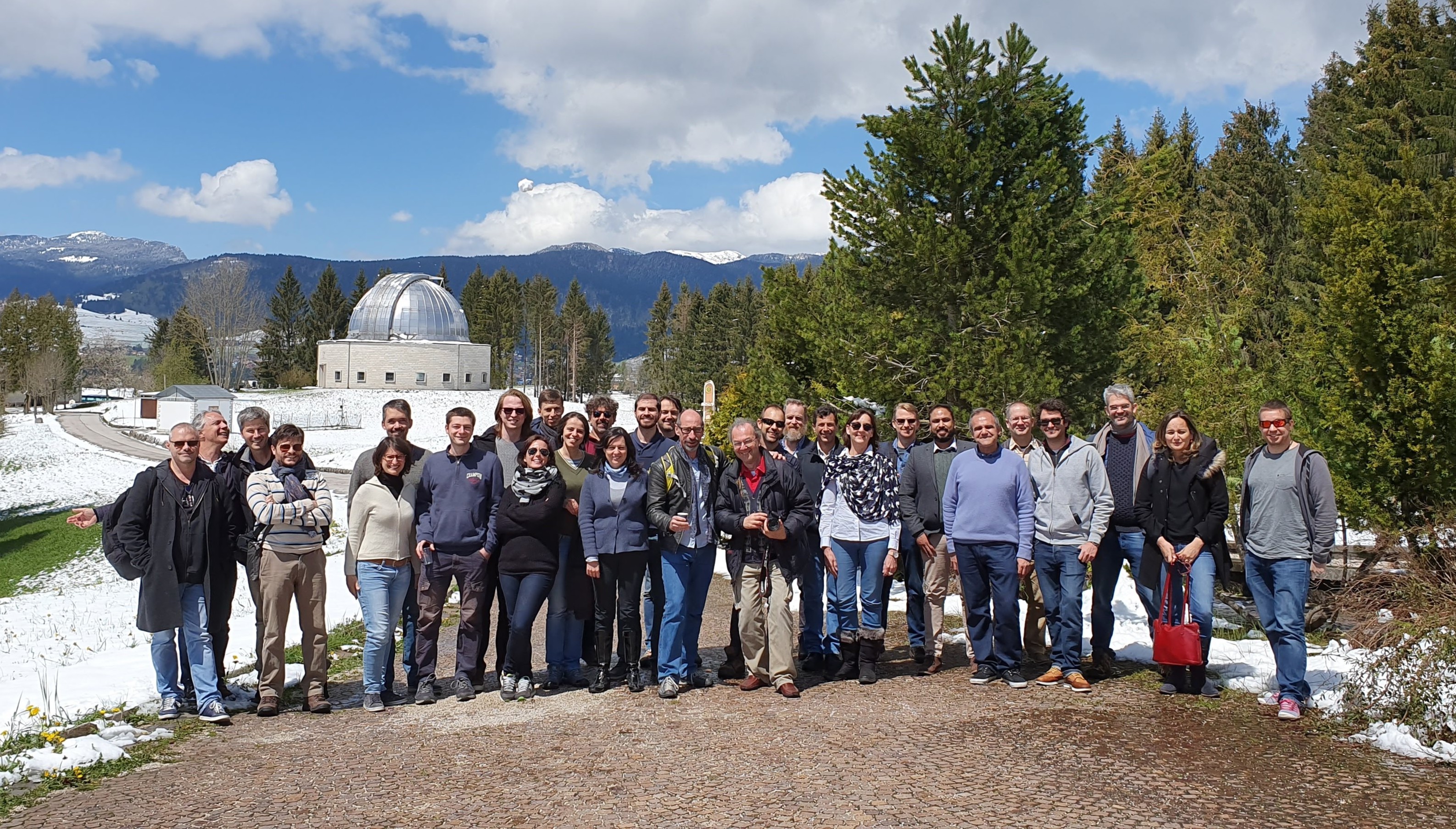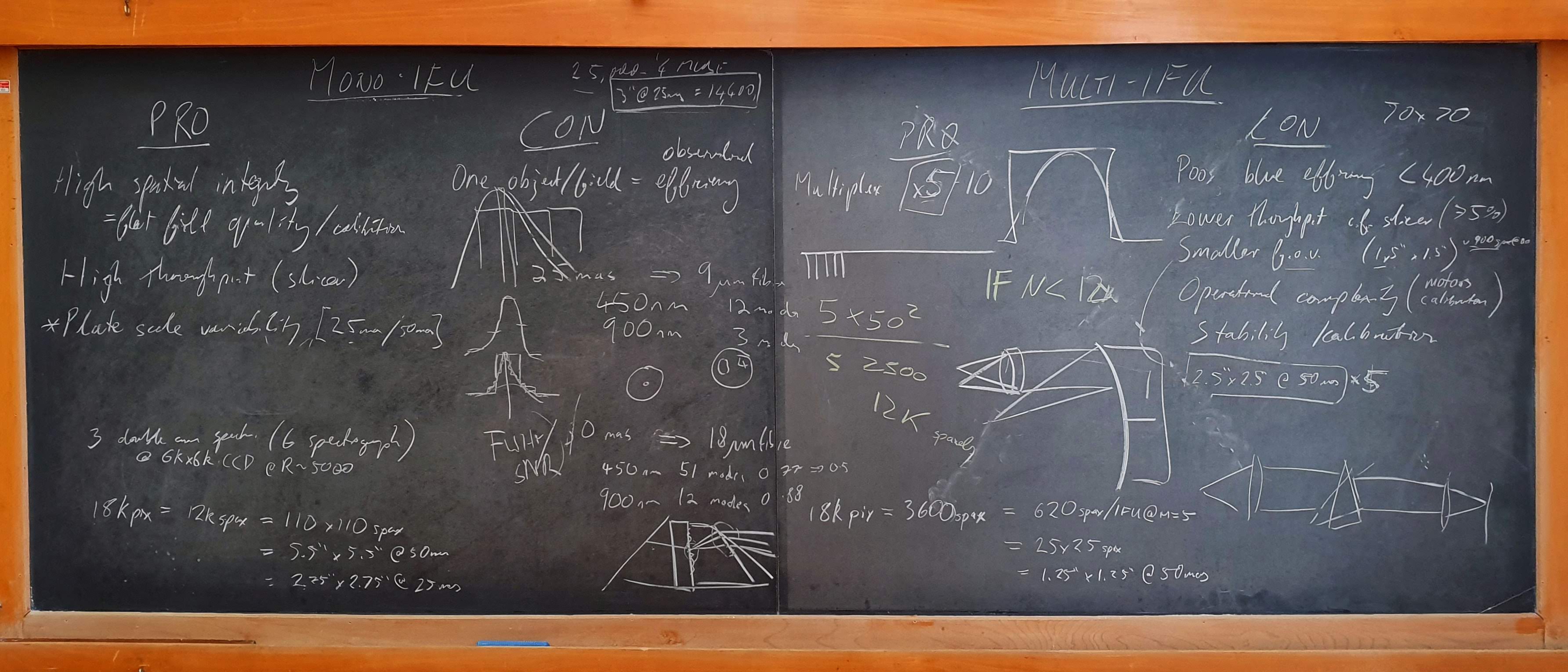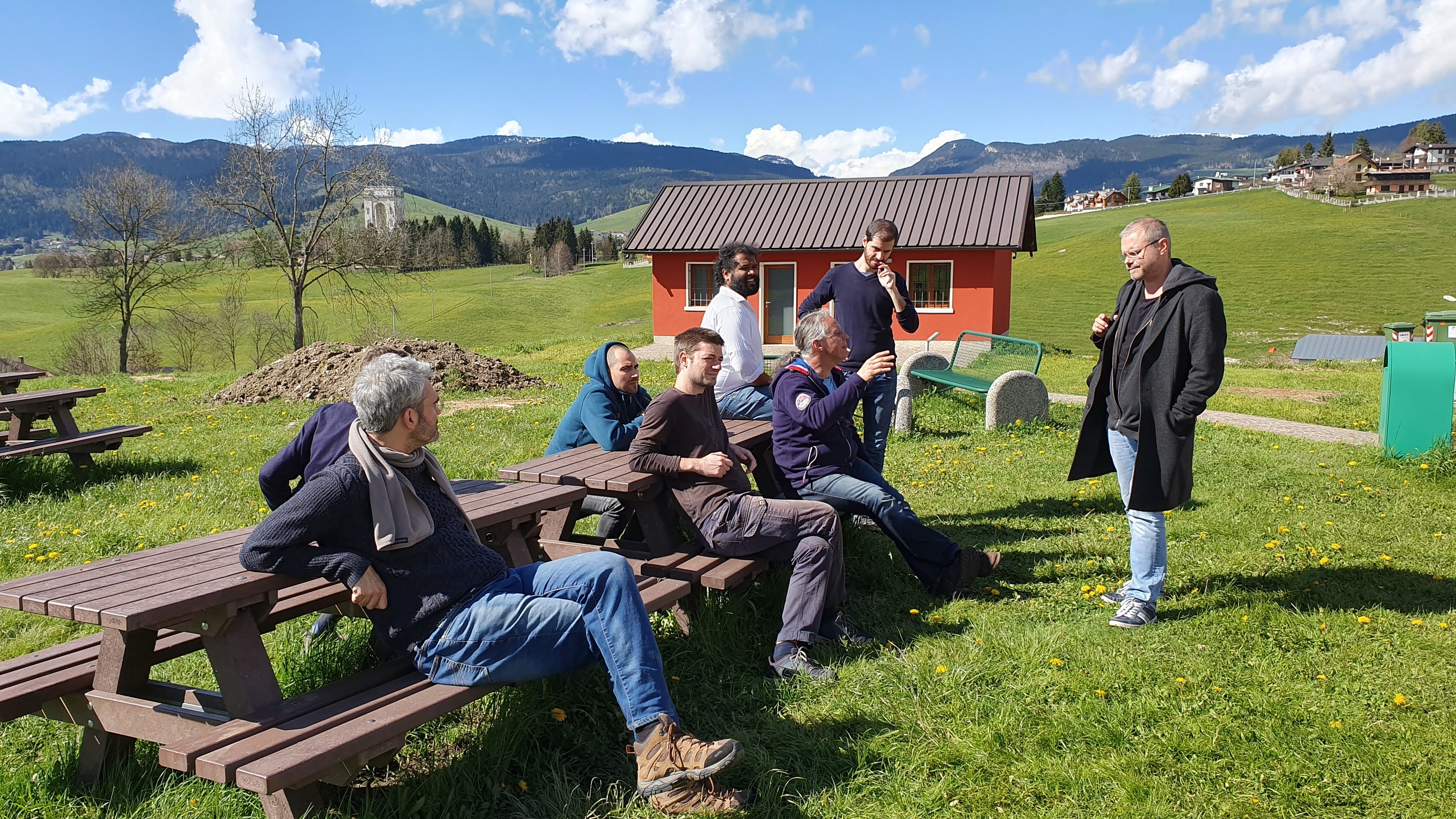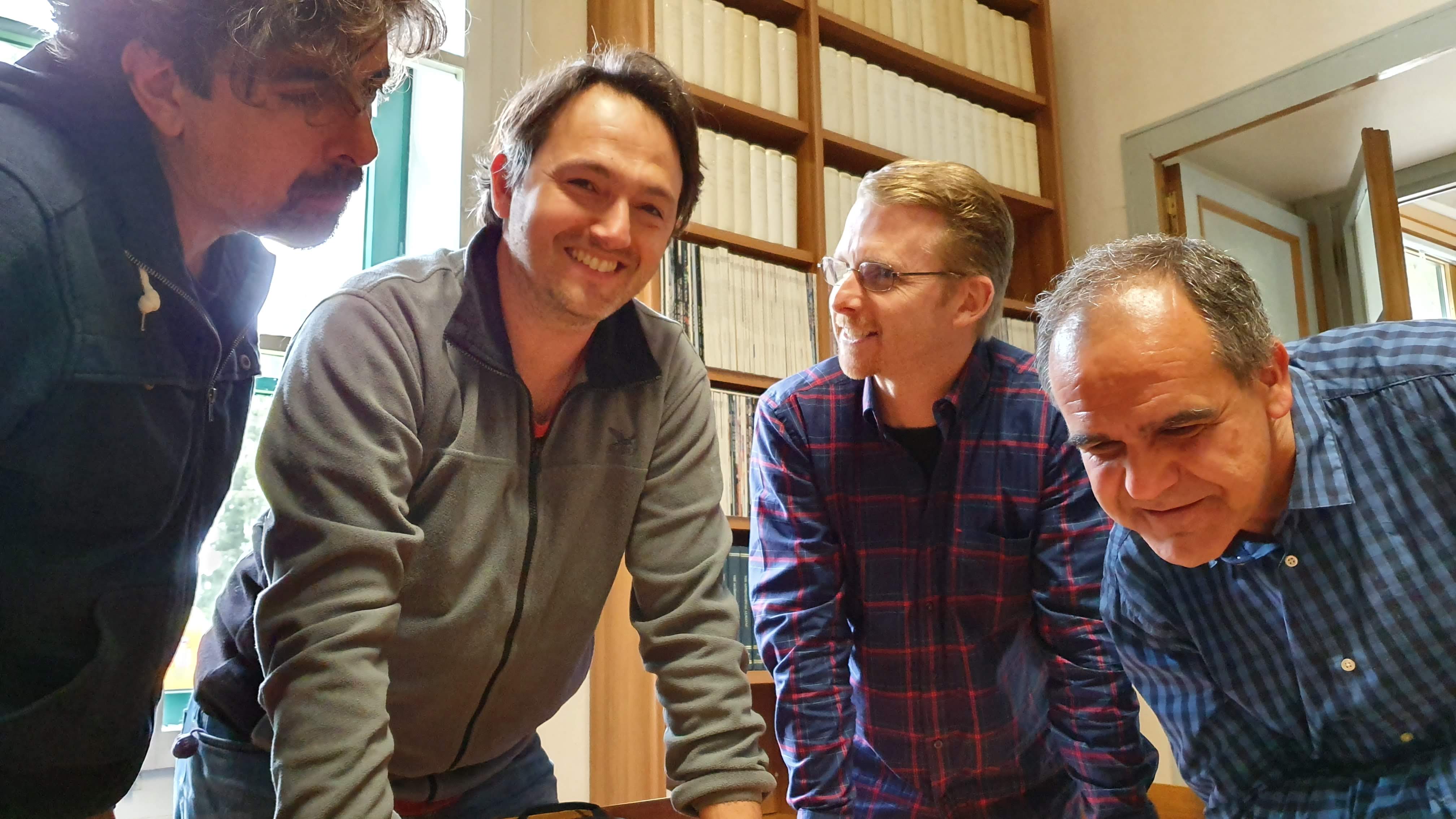The busy week was proposed (by Stefan Stroebele) at the Kick-off meeting as an effective way to boost activity and communication. It was decided to have two busy weeks during the phase A, the first one in Europe early in the phase A (05/2019) to kick start the project and the second one in Australia close to the end of the phase A (02/2020) to work on the final phase A document writing. The Asiago Observatory, managed by INAF - Padova Observatory and University of Padova, was picked for the first busy week. It was supposed to be spring - mid May. Instead, everybody arrived on Monday in a landscape shrouded by 10cm of snow.
Forty four people registered and attended the busy week. Most stayed the whole week; some attended only one or two days. At peak, we must have been 37 (Wednesday). The organisation was handled in a masterly way by Maria Bergomi, with the help of Simonetta Chinellato, Valentina Viotto, Elena Carolo and others. We had decided early on that this was to be a working meeting. Even more so than a workshop: the goal was to go beyond presentations into producing actual work on a variety of topics: Technical and science topics, but also system engineering and management. The agenda was split in a few plenary sessions (only about 1 hour/day) and in “split sessions”, during which smaller groups could work in side rooms. Three of these were provided, many with white/chalk boards and/or projectors. Remote participation was also possible, although sometimes challenging. We had a few talks presented remotely (Stroebele, Bono, Gratadour). In addition to split sessions, we also had “working sessions”, which were originally intended as some kind of time off to work/act on actions/ideas that had emerged during the split session.

Overall, according to all, the busy week was a huge success, achieving the following top level goals:
- Introducing MAVIS team members to each other; many, both from Italy, France and Australia, had not yet met the rest of the team. Beyond that, 4 days are actually enough to cement these links and make everyone comfortable with each other;
- Serve as an effective kick start of the MAVIS phase A. There had already been quite a bit of work in various areas (interface and documentation gathering, optical design, numerical simulations within others), but the busy week really felt as we were going into high gear.
- Organising the work; defining action items as we went; assigning responsibility for the documents the consortium will have to produce for the end of phase A. As pioneered successfully during the MAVIS kick-off meeting, the minutes of the busy week were taken using collaborative editing on google docs: At any time, we had between 5 and 10 contributors taking notes. The net result is that the minutes, presented in this document, are not only very complete, quite accurate, but also were essentially ready at the end of the busy week.
As shown by the 25 pages of minutes, many aspects were debated and a number of decisions were taken. A top level summary and top level selection of mine (probably biased):
- The science group down-selected the spectrograph concept. This is the result of about one year of work (it started before the MAVIS Sydney workshop in May 2018) by Richard, Giovanni and the whole science team. The process is summarised in a separate document, “Summary of MAVIS Busy Week: Science Team Outcomes” (MAVIS-MGT-MOM-0004).

- After looking in some detail in the various de-rotation scheme and their trade-off, Davide Greggio presented a number of alternative optical design, including both refractive or reflective concepts.
- Lots of work was done by David Brodrick, Valentina Viotto, Gaston Gaussachs Pierre Haguenhauer and others on system engineering, agreeing on interfaces, agreeing on processes, and setting up a trade-off procedure and document. Requirement flow down from the TLR to system requirements was also kick started.
- And then there were many other sessions about AOM mechanics, Real-Time Computer (presentation by Damien Gratadour), current AOF facilities including GALACSI (presentation by Stefan Stroebele), AO control, Data reduction and PSF reconstruction, electronics and detector controllers, LGS splitting, alternative instruments (presentation by Fernando Pedichini), calibration unit needs and concepts, prototyping, the metrics to use for the faint end requirements and sky coverage, etc, etc
All in all, an extremely successful and productive week!
 |
 |